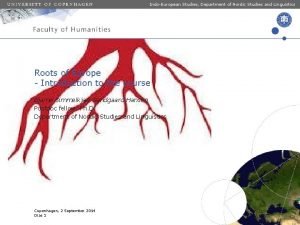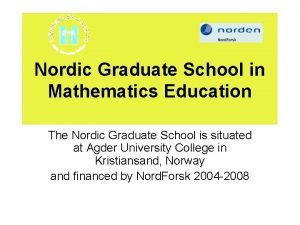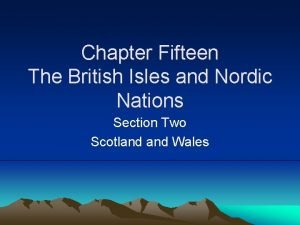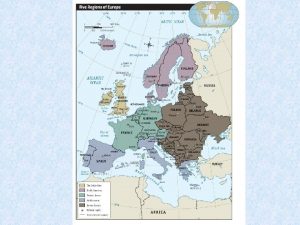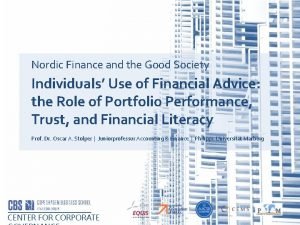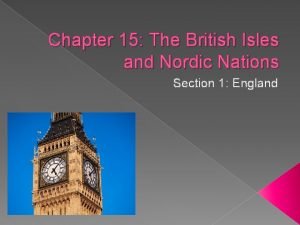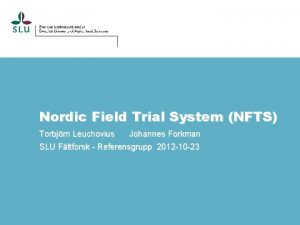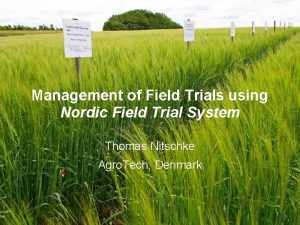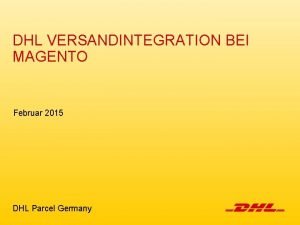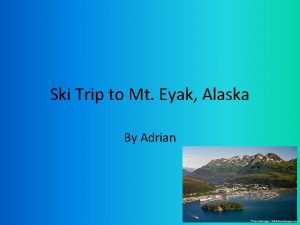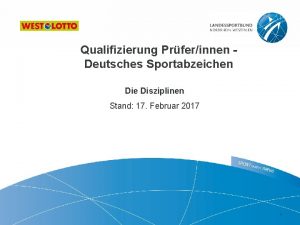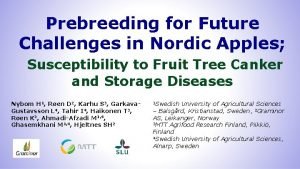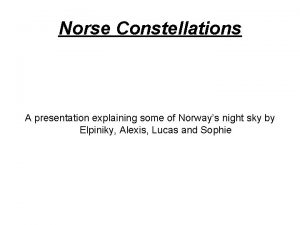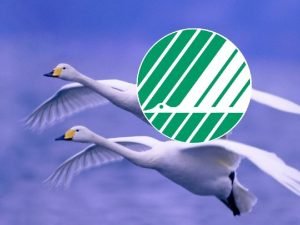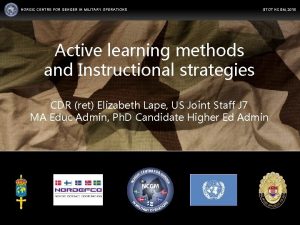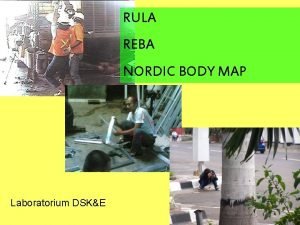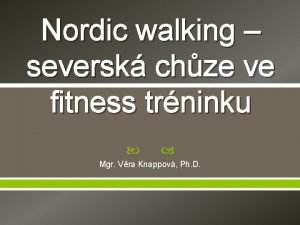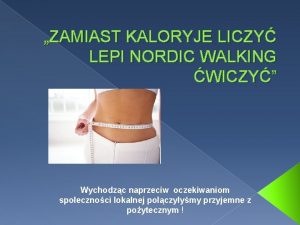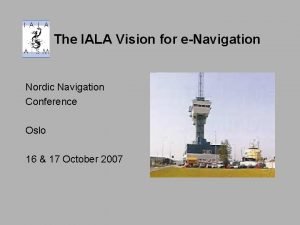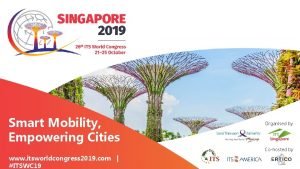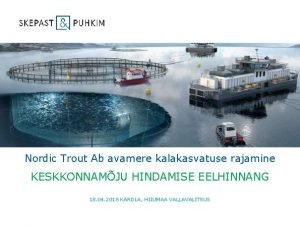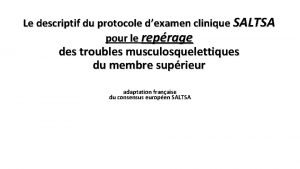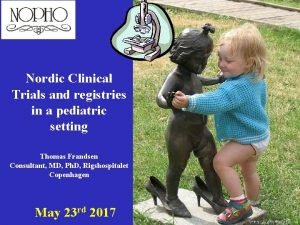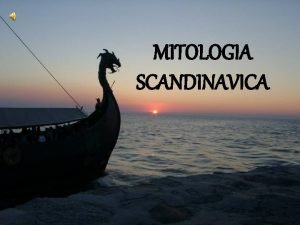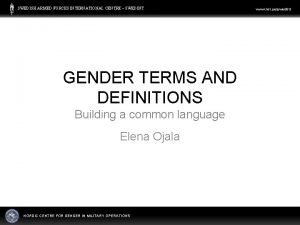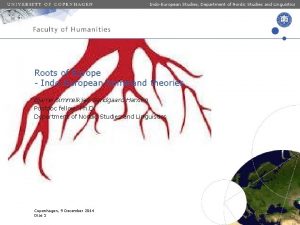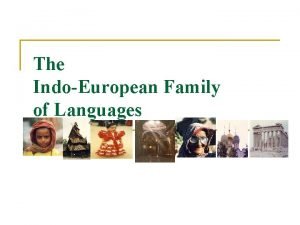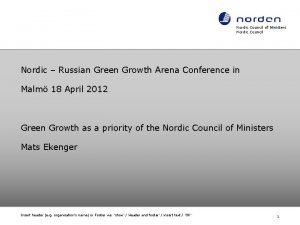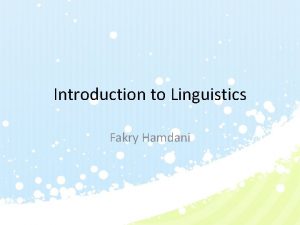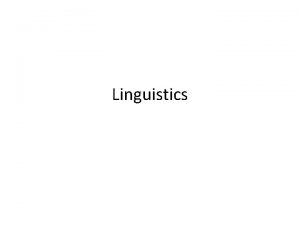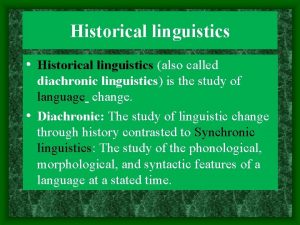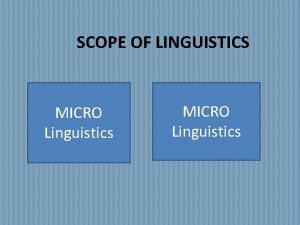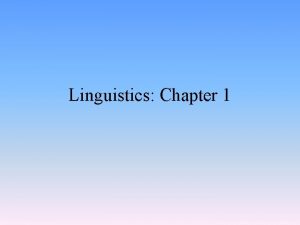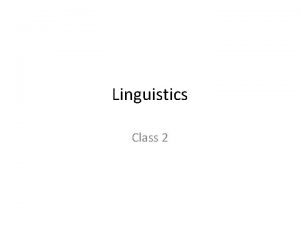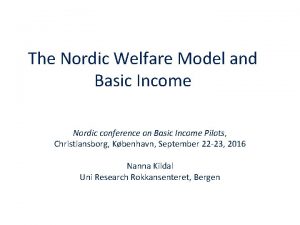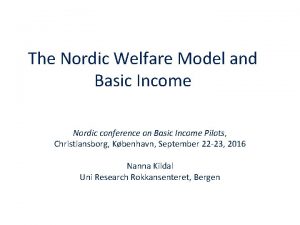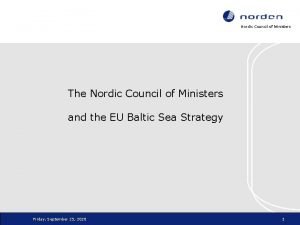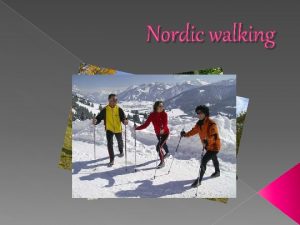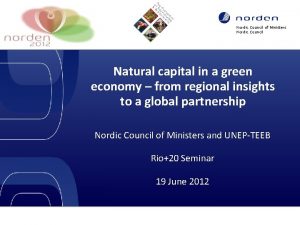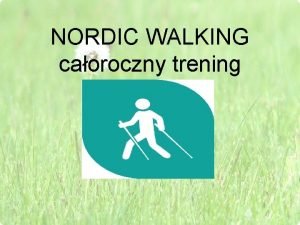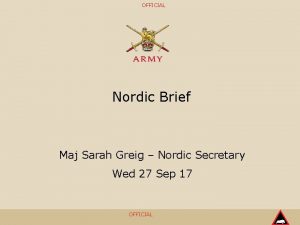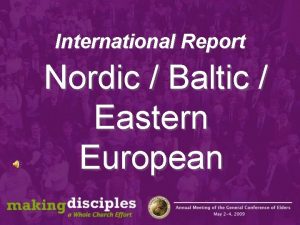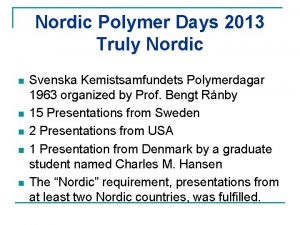IndoEuropean Studies Department of Nordic Studies and Linguistics


































- Slides: 34

Indo-European Studies, Department of Nordic Studies and Linguistics Roots of Europe - Introduction to the course Bjarne Simmelkjær Sandgaard Hansen Postdoc fellow, Ph. D. Department of Nordic Studies and Linguistics Copenhagen, 2 September 2014 Dias 1

Indo-European Studies, Department of Nordic Studies and Linguistics Formalities and practicalities What, • • when and where Elective course, principally BA level 15 ECTS points equalling a total workload of 412. 5 hours Autumn 2014, Tuesdays 3. 15 -6. 00 p. m. University of Copenhagen, Campus South, room 25. 1. 28 General course plan • Detailed course plan to be found on Absalon • Most lectures: Presentation (1 -2 hours) by invited guest lecturers from UCPH or abroad followed by discussion and/or exercises (1 -2 hours) • Preparation: Reading of the literature suggested by the lecturers (principally max. 7 hours/week) • 9 December: Student presentations on exam paper topic • Oral presentations of max. 5 -10 minutes • Obligatory use of audio-visual aids (to be uploaded on Absalon no later than Monday 8 December) Copenhagen, 2 September 2014 Dias 2

Indo-European Studies, Department of Nordic Studies and Linguistics Formalities and practicalities Lecturers Bjarne Simmelkjær Sandgaard Hansen Birgit Anette Rasmussen (Olsen) Adam Hyllested University of Copenhagen (Indo-European Studies, coordoinator of the course) University of Copenhagen (Indo-European Studies) Copenhagen, 2 September 2014 Dias 3

Indo-European Studies, Department of Nordic Studies and Linguistics Formalities and practicalities Lecturers David W. Anthony Joachim Burger Oliver Simkin Hartwick College (US) (Archaeology) Johannes-Gutenberg. Universität Mainz (Molecular Anthropology, Genetics) University of Cambridge (Indo-European Studies, incl. substrate studies) Copenhagen, 2 September 2014 Dias 4

Indo-European Studies, Department of Nordic Studies and Linguistics Formalities and practicalities Lecturers Gordon Whittaker Guus Kroonen Rune Iversen Georg-August. Universität Göttingen (Indo-European Studies, Assyriology) University of Copenhagen (Indo-European Studies) University of Copenhagen (Archaeology) Copenhagen, 2 September 2014 Dias 5

Indo-European Studies, Department of Nordic Studies and Linguistics Formalities and practicalities Video • • • conferencing Some lecturers from abroad Live lectures via video conference (Adobe Connect) if you fall ill one day or are otherwise prevented from showing up in class, you can also use Adobe Connect to gain remote live access to the class room • Enter https: //c. deic. dk/roe in your web browser (does allegedly not work with Safari and Chrome) • Choose “Enter as a Guest” • Enter your name and the course room password (4140) • If prompted, enter the course room password again • Click “Enter room” • If you want to ask questions or participate in debate, please use the ”Raise hand” function… Copenhagen, 2 September 2014 Dias 6

Indo-European Studies, Department of Nordic Studies and Linguistics Formalities and practicalities Copenhagen, 2 September 2014 Dias 7

Indo-European Studies, Department of Nordic Studies and Linguistics Formalities and practicalities Video • • • conferencing Some lecturers from abroad Live lectures via video conference (Adobe Connect) if you fall ill one day or are otherwise prevented from showing up in class, you can also use Adobe Connect to gain remote live access to the class room • Enter https: //c. deic. dk/roe in your web browser (does allegedly not work with Safari and Chrome) • Choose “Enter as a Guest” • Enter your name and the course room password (4140) • If prompted, enter the course room password again • Click “Enter room” • If you want to ask questions or participate in debate, please use the ”Raise hand” function… and when allowed to speak, please turn on your webcam and microphone Copenhagen, 2 September 2014 Dias 8

Indo-European Studies, Department of Nordic Studies and Linguistics Formalities and practicalities Copenhagen, 2 September 2014 Dias 9

Indo-European Studies, Department of Nordic Studies and Linguistics Formalities and practicalities Video • • • conferencing Some lecturers from abroad Live lectures via video conference (Adobe Connect) if you fall ill one day or are otherwise prevented from showing up in class, you can also use Adobe Connect to gain remote live access to the class room • Enter https: //c. deic. dk/roe in your web browser (does allegedly not work with Safari and Chrome) • Choose “Enter as a Guest” • Enter your name and the course room password (4140) • If prompted, enter the course room password again • Click “Enter room” • If you want to ask questions or participate in debate, please use the ”Raise hand” function… and when allowed to speak, please turn on your webcam and microphone. You may also use the ”Chat” function Copenhagen, 2 September 2014 Dias 10

Indo-European Studies, Department of Nordic Studies and Linguistics Formalities and practicalities Copenhagen, 2 September 2014 Dias 11

Indo-European Studies, Department of Nordic Studies and Linguistics Formalities and practicalities Video • • • conferencing Some lecturers from abroad Live lectures via video conference (Adobe Connect) if you fall ill one day or are otherwise prevented from showing up in class, you can also use Adobe Connect to gain remote live access to the class room • Enter https: //c. deic. dk/roe in your web browser (does allegedly not work with Safari and Chrome) • Choose “Enter as a Guest” • Enter your name and the course room password (4140) • If prompted, enter the course room password again • Click “Enter room” • If you want to ask questions or participate in debate, please use the ”Raise hand” function… and when allowed to speak, please turn on your webcam and microphone. You may also use the ”Chat” function • All lectures to be recorded (link to recordings on Absalon) Copenhagen, 2 September 2014 Dias 12

Indo-European Studies, Department of Nordic Studies and Linguistics Formalities and practicalities Examination • Free written paper (topic chosen in collaboration with the coordinator of the course) • Assessment by the teacher and internal examiner (Bjarne) and by a yet unknown external examiner from outside the University of Copenhagen • Length: 10 -15 standard pages equalling 24, 000 -36, 000 characters not including contents page and references • For MA level students using this course for an exam in “Paper on a Special Topic”: 15 -25 standard pages equalling 36, 000 -60, 000 characters followed by an oral defence of 30 minutes • Deadline for handing in the free written paper: Most likely to be around 5 January 2015 (exact date to follow) • Estimated expenditure of time for the exam • Reading up on the subject: approx. 200 hours • Writing the exam paper: approx. 50 hours Copenhagen, 2 September 2014 Dias 13

Indo-European Studies, Department of Nordic Studies and Linguistics Formalities and practicalities Competences to be demonstrated in the exam paper (= the students must be able to…) • “account in outline for theories (originating from the fields of e. g. language history, archaeology, science of religion and genetics) on European prehistory and on the migrations and developments that have formed Europe as we know it from the time of the earliest written sources; • evaluate mutually contradictory theories critically by reference to the above-mentioned knowledge; and • present this evaluation and the considerations underlying it in an accurate and comprehensive manner using the terminology normally applied within the research fields of relevance. ” Any student who fully meets these criteria will be assigned the grade 12 (official ECTS grade A) at the assessment Copenhagen, 2 September 2014 Dias 14

Indo-European Studies, Department of Nordic Studies and Linguistics Formalities and practicalities Grades of the Danish educational system (7 point grading scale) • 12 (= A): For an excellent performance displaying a high level of command of all aspects of the relevant material, with no or only a few minor weaknesses • 10 (= B): For a very good performance displaying a high level of command of most aspects of the relevant material, with only minor weaknesses • 7 (= C): For a good performance displaying good command of the relevant material but also some weaknesses • 4 (= D): For a fair performance displaying some command of the relevant material but also some major weaknesses • 02 (= E): For a performance meeting only the minimum requirements for acceptance • 00 (= Fx): For a performance which does not meet the minimum requirements for acceptance • -3 (= F): For a performance which is unacceptable in all aspects Copenhagen, 2 September 2014 Dias 15

Indo-European Studies, Department of Nordic Studies and Linguistics Formalities and practicalities Complaints • Students can file a complaint regarding questions of rules and procedures, the basis of the examination (questions, assignments, papers etc. ), the examination, or the marking • After receiving a statement from the assessment team (internal and external examiner), the faculty will either • Offer a new assessment (possible higher or lower grade – no possibility of appeal) • Offer a new examination (possible higher or lower grade – no possibility of appeal) • Rule against the student (rejection – may be appealed to the official Board of Appeals) Copenhagen, 2 September 2014 Dias 16

Indo-European Studies, Department of Nordic Studies and Linguistics Formalities and practicalities Complaints (continued) • The Board of Appeals will either • Offer a new assessment • Offer a new examination • Rule against the student (rejection) • Only complaints regarding rules and procedures in the handling/decision of the Board of Appeals can be brought before the faculty at this stage • Complaints regarding specific teachers, class lessons and tuition are sent to the head of department in question and will not result in any offer of a new assessment or examination because class lessons and tuition are not considered part of the examination Copenhagen, 2 September 2014 Dias 17

Indo-European Studies, Department of Nordic Studies and Linguistics Formalities and practicalities Individual supervision concerning the exam paper • Most Tuesdays before class (2 -3 p. m. ) – and otherwise upon agreement – my office is open to students wishing to talk to me about the exam paper and related issues • Location of office: UCPH, Campus South, room 22. 5. 34 • Email: bssh@hum. ku. dk • Phone: (+45) 35 32 93 33 / (+45) 21 67 98 03 Estimated workload • Preparation (reading) before class: 14 x 7 hours • Class (lectures, discussion and exercises): 15 x 3 hours • Preparation of in-class presentation: 20 hours • Preparation (reading, brainstorming, structuring, supervision etc. ) for the exam paper: 200 hours • Writing the exam paper: 50 hours • Total: 413 hours Copenhagen, 2 September 2014 Dias 18

Indo-European Studies, Department of Nordic Studies and Linguistics Break of 15 minutes https: //www. you tube. com/watch? v=E 3 IM 0 Ad. QLLQ Copenhagen, 2 September 2014 Dias 19

Indo-European Studies, Department of Nordic Studies and Linguistics Europe © GEOATLAS. com Copenhagen, 2 September 2014 Dias 20

Indo-European Studies, Department of Nordic Studies and Linguistics Europe The prehistory of European peoples can be traced by • Linguistic studies • Examination of archaeological sites • Examination of the DNA of the people who live in Europe or from ancient DNA The linguistic build-up of Europe • Many languages represented in modern-day Europe… • … but probably even more in prehistoric Europe • Modern languages of Europe may be grouped into roughly three groups (families) when regards genetic classification • Indo-European languages • Uralic languages • Basque • … and also Altaic, North Caucasian and Kartvelian at the borders between Europe and Asia Copenhagen, 2 September 2014 Dias 21

Indo-European Studies, Department of Nordic Studies and Linguistics Europe Language families of early Europe (including only attested languages of the earliest periods) • Indo-European languages (subgroups Greek, Messapic, Venetic, Italic and Celtic) • Germanic, Balto-Slavic and Albanian attested only at a later period • The language of the linear A script (“Minoan”) • The language of some uninterpretable inscriptions in the Greek alphabet from eastern Crete (“Eteocretan”) • Elymian (on Sicily) • Tyrrhenian languages (Etruscan, Lemnian and possibly Raetic) • The language of the stele of Novilara (east of San Marino) and a few other fragments • Iberian (southern and eastern Spain) • Tartessian (southwestern Iberia) Copenhagen, 2 September 2014 Dias 22

Indo-European Studies, Department of Nordic Studies and Linguistics Europe Language families attested a little later • Remaining Indo-European languages • Uralic • Basque And finally some languages never attested • Substratum: Refers to the language of speakers who had less prestige and power in comparison with speakers of another language in contact with the former • Superstratum: Refers to a language whose speakers enjoy high prestige in comparison with speakers of another language upon which the former language has often been imposed by means of force, i. e. invasion • Adstratum: Labels the linguistic interaction of equally prestigious speakers of two or more different languages • Revealed by suspected borrowings from unknown sources in attested languages Copenhagen, 2 September 2014 Dias 23

Indo-European Studies, Department of Nordic Studies and Linguistics Europe © GEOATLAS. com lic Unattested suband superstrate languages Ura Indo-European languages Tyrrhenian Stele of Novilara Basque Tartessian Iberian Elymian Minoan + Eteocretan Copenhagen, 2 September 2014 Dias 24

Indo-European Studies, Department of Nordic Studies and Linguistics Europe FACT: If these languages have been attested or can be deduced or reconstructed to have existed, somebody must have spoken them! Information on these speakers may be retrieved from, above all • Archaeology • Genetics Archaeology • Correlation of archaeological findings (e. g. evidence of horse breeding or specific rituals) with the vocabulary and (for attested languages only) the texts of the languages of the areas in question • Several ‘archaeological cultures’ in prehistoric Europe, i. e. cultural complexes of peoples using identical or similar pottery, burying their dead relatives in identical or similar ways etc. Copenhagen, 2 September 2014 Dias 25

Indo-European Studies, Department of Nordic Studies and Linguistics Europe Examples of archaeological cultures relevant to our purpose of disclosing the origins of the European peoples • Funnel-Beaker (Northern Europe, ca. 4300 -2800 BCE) • Globular Amphora (Northern Europe, ca. 3400 -2800 BCE) • Corded Ware (North-Eastern Europe, ca. 2900 -2450 BCE) • Bell-Beaker (West-Central Europe, ca. 2800 -1800 BCE) • Yamnaya (Pontic-Caspian Steppes, ca. 3500 -2000 BCE) • Preceded by Sredny Stog (ca. 4500 -3500 BCE) and Samara (ca. 5500 -4800 BCE) • Regarded by the mainstream Kurgan Hypothesis as the culture of the Indo-Europeans • Maykop (Western Caucasus, ca. 3700 -3000 BCE) • Andronovo (West Asiatic Steppes, ca. 1800 -1400 BCE), preceded by Sintashta-Petrovka (ca. 2100 -1800 BCE) • Afanasevo (Southern Siberia, ca. 3300? -2000 BCE) Copenhagen, 2 September 2014 Dias 26

Indo-European Studies, Department of Nordic Studies and Linguistics Europe Map of European Neolithic cultures (most within the Linear Pottery Horizon at the apogee of Danubian expansion), ca. 4500– 4000 BCE © Wikimedia Commons Copenhagen, 2 September 2014 Dias 27

Indo-European Studies, Department of Nordic Studies and Linguistics Europe Archaeological cultures of Europe, ca. 3000 -2000 BCE (Yamnaya around 3500 -2200 BCE, though) Copenhagen, 2 September 2014 Dias 28 © Wikimedia Commons

Indo-European Studies, Department of Nordic Studies and Linguistics Europe Maykop culture, ca. 3700 -3000 BCE Copenhagen, 2 September 2014 Dias 29 © Wikimedia Commons

Indo-European Studies, Department of Nordic Studies and Linguistics Europe Relevant archaeological cultures on the Asiatic steppes © Wikimedia Commons Copenhagen, 2 September 2014 Dias 30

Indo-European Studies, Department of Nordic Studies and Linguistics Europe Genetics • Data from sequences of mitochondrial, Y-chromosome, and autosomal DNA (from modern or ancient samples) • Mitochondrial DNA: A mutation in the mt. DNA of a given woman is inherited unchanged and in a direct line from mother to daughter (until a new mutation happens) • Y-chromosome: A mutation in the Y-DNA of a given man is inherited unchanged and in a direct line from father to son (until a new mutation happens) • Consequence: Patri- as well as matrilineal chains of mutations can be identified, revealing the migrational routes of any individual’s ancestors… all the way back to Africa! • Chains of mutations are collected in so-called “haplogroups” • Example: Any male carrying the mutational sequence “Genetic Adam” M 168 M 89 M 45 M 207 M 173 M 17 = Haplogroup R 1 a 1 • R 1 a 1 = Indo-Europeans? Copenhagen, 2 September 2014 Dias 31

Indo-European Studies, Department of Nordic Studies and Linguistics Europe Prevalent Y-DNA haplogroups of Europe Percentage of the population belonging to haplogroup R 1 a © Wikimedia Commons Copenhagen, 2 September 2014 Dias 32 © Wikimedia Commons

Indo-European Studies, Department of Nordic Studies and Linguistics Break of 15 minutes https: //www. you tube. com/watch? v=E 3 IM 0 Ad. QLLQ Copenhagen, 2 September 2014 Dias 33

Indo-European Studies, Department of Nordic Studies and Linguistics Questions… and balancing of expectations Copenhagen, 2 September 2014 Dias 34
 Language
Language Difference between linguistics and applied linguistics
Difference between linguistics and applied linguistics European and nordic studies
European and nordic studies Geography gsme
Geography gsme British isles and nordic nations quiz
British isles and nordic nations quiz The british isles and nordic nations map
The british isles and nordic nations map Nordic finance and the good society
Nordic finance and the good society British isles and nordic nations map
British isles and nordic nations map Paradigm shift from women studies to gender studies
Paradigm shift from women studies to gender studies Nordic field trial system
Nordic field trial system Nordic field trial
Nordic field trial Nordic innovation centre
Nordic innovation centre Nordic combat uniform system
Nordic combat uniform system Dhl parcel nordic
Dhl parcel nordic Nordic choice club gold
Nordic choice club gold Scandinavian peninsula
Scandinavian peninsula Mt eyak ski
Mt eyak ski Zonenweitsprung kinder
Zonenweitsprung kinder Nordic apples
Nordic apples Thiazi's eyes constellation
Thiazi's eyes constellation Nordic ecolabel (the swan)
Nordic ecolabel (the swan) Nordic centre for gender in military operations
Nordic centre for gender in military operations Kuesioner nordic body map
Kuesioner nordic body map Nordic walking benefits
Nordic walking benefits Nordic changemaker map
Nordic changemaker map Nordic walking wymowa po polsku
Nordic walking wymowa po polsku Nordic-backup
Nordic-backup Nordic navigation
Nordic navigation Rsmp protocol
Rsmp protocol Nordic trout
Nordic trout Flexion palmaire
Flexion palmaire Language translator online
Language translator online Nordic clinical
Nordic clinical Zeii nordici
Zeii nordici Swedish armed forces international centre
Swedish armed forces international centre


